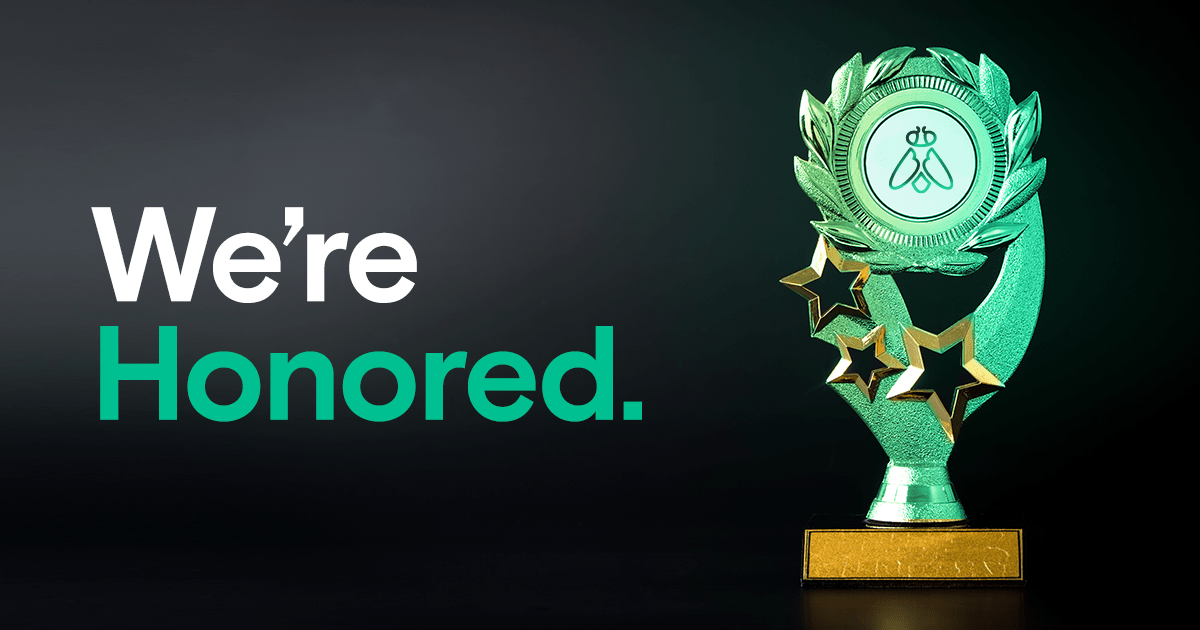Slate, Livelike, Greenfly in 2020 - The Year In Review
How was 2020? How will 2021 be? Will the sports industry restart normally?
How was 2020? How will 2021 be? Will the sports industry restart normally? We have recently asked these kinds of questions to the startups we represent. This sort of cross-interview with Slate CEO Michael Horton, Livelike CEO Miheer Walavalkar and Greenfly CEO Daniel Kirschner will present you their achievements and developments through 2020 and present their objectives and what they will be looking for in 2021, should it be from a business, product, team, personal point of view.
A look back on 2020
Was 2020 a good year for our startups? Obviously it has been a very special year that has affected many businesses and industries, the sports and entertainment sectors being two of them. In times of social restrictions, lockdowns and curfews, digital solutions appeared to be more and more relevant, if not mandatory.
In proposing digital tools to enhance people’s experiences, drive interactions, improve internal processes and create new business opportunities, we are pretty lucky to say that Slate, Greenfly and Livelike had a good year in general. As Slate’s CEO Michael Horton told us:“Despite the challenges of COVID of this year we were fortunate to be able to grow our team, product, and business significantly.”
For Livelike, this special year has allowed them to penetrate more the industry and to fully dedicate their time and energy to promote their Audience Engagement Suite: “As more sports rights holders and content owners looked into our watch parties and our full suite of social, interactive features through the lens of the new reality of social distancing, they increasingly understood the value of what we are offering.” said Miheer Walavalkar, Livelike CEO. “We are even successfully expanding our target market beyond sports to news, entertainment and music.”
Greenfly CEO Daniel Kirschner told us: “2020 was a rollercoaster ride, but it was an incredible year for Greenfly. We grew faster than 2019, made our products more powerful and easier to use, and saw almost all of our customers renew and even expand the use of our platform.”
Startups main objective in 2020 was to gain traction and get more adoption of their respective products. “While we primarily worked with NFL teams in 2019, in 2020 we were able to expand into working with teams across the NBA, MLB, NHL, MLS, EPL and more.”Michael Horton said. Greenfly also set out to scale their company significantly more than 2019: “We signed some of the biggest sports leagues in the world — across multiple sports. We started working with more of the top TV networks in Europe and North America, and made an impact on the US presidential election helping the Democratic Party and Joe Biden leverage their surrogates, ambassadors and influencers to win.” Daniel Kirschner.
The COVID Crisis:
Even though startups might be seen as more flexible structures, there’s no doubt that they also had to change their way of working and adapt themselves to this new and unusual situation. “We made some very quick adjustments, and I am very proud of how we handled the initial reaction to COVID-19” said Miheer Walavalkar. “I believe we are actually stronger than before because of new operational efficiencies, a successful pivot to a fully-remote workplace, and some key decisions made early on that extended our runway.” he added.
For Slate, the initial focus was on what they could do to help their existing customers during what was a very tough and uncertain time for many of them. “We tried to be as flexible and understanding as possible especially in those early months of the pandemic when the return of sports was so uncertain. After numerous conversations with our customers to understand how they were navigating the pandemic and what new challenges they had we started to discover many ways Slate could be extremely valuable in this unique environment the pandemic created. Many of our customers were having to create more content than ever before, service more sponsors on social media, and do it all with a smaller team that is now working fully remote for the first time.” Michael said.
But the lockdown has impacted, to some extent, certain businesses by accelerating discussions. As Greenfly explained to us “We saw more global growth than we would have expected because the barriers to travel were removed. We were able to speak with many more customers and prospective customers simply because we could arrange Zoom meetings anywhere, anytime. Video meetings and virtual events are certainly less fun, but definitely more productive in the short term.”
2020 has brought its share of bad and good moments
At Livelike it “sadly began with the death of one of our biggest supporters, former NBA Commissioner David Stern, who was an investor but also a personal mentor to me” said Miheer Walavalkar, before adding: “That said, one of the proudest moments in my career was our deal with Turner Sports to use our platform for the NBA Playoffs. I wish Mr. Stern was here to share that with (and no doubt, provide his unique take on it all).”
See: David Stern’s legacy lives on in our year without him
If Slate was to remember one thing in particular it will definitely be the Super Bowl LIV: “we were fortunate enough to not just have both the Chiefs & 49ers use Slate, but also Fox Sports & the NFL as well. Them trusting Slate for the biggest sporting event of the year was deeply gratifying.”
2020 allows startups and companies to learn a lot on how to work remotely without losing efficiency
“Our team is incredibly resilient.” Miheer declared. “Despite being based across time zones and working from home, our productivity has increased and the experience has in some ways been better than if we were still in a physical office.”
“We saw a huge acceleration of existing trends in 2020, especially the acceleration of digital communications to replace in-person and broadcast communications. Companies have really pushed their digital transformation timelines forward by 2-5 years.” Greenfly’s CEO Daniel Kirschner
Regarding Slate, the learning was more product-oriented: “In some ways 2020 forced us to accelerate our future plans and speed up our learning. We learned of new ways that Slate could be used in different industries and of new verticals where Slate could be valuable.”
What are the plans for 2021?
Expansion and growth are obviously what startups have to look for as it drives business and increases outcome. They need to continue signing new exciting collaborations and strategic partnerships. “For 2021, we will be focused on expanding the reach of Slate even further outside of the US into foreign markets such as Europe and Latin America. Our deep sports client roster in the US naturally positions us to be a relatable solution for European & Latin American sports organizations. But we also are focused on driving adoption of Slate by social media teams that represent non-sports brands - whether that’s in media, fashion, retail or beauty.” Michael explained to us.
For Livelike the plan for 2021 is pretty straightforward: “continue to deliver on our promises to our partners, and improve our platform, while continuing our expansion beyond sports to other live events including music, news, reality TV and more.” Miheer then added “To quantify, my goal is to have at least two partners per continent, and to grow 3X, which I know is ambitious, but I am very bullish about our business and the direction in which we are heading.”
Growing is not possible without a viable product that helps organisations in their daily activities: “Our priorities are very much focused on expanding our product & team in 2021. 2020 was our first full year as a company and we were able to achieve some quick traction. We never would have been able to accomplish what we did in 2020 without the amazing people that joined Slate last year. In 2021 we plan to really ramp things up. We have ambitious plans to scale both our team and product offering.” Michael said. “We also want to continue having as many conversations with social media experts as possible. These present a great opportunity for us to learn more about what pain points they have and how we help support them. From working with pro sports teams over the past year and half we’ve already been able to validate a long list of product features we are developing to make our product even more valuable to them in the future.
See : Slate Announces an Innovative New Integration with Slack
Greenfly’s approach is to help companies realise the importance of brand advocacy and how their solution makes it possible through success stories with existing clients: “For the upcoming year, we’re going to double-down on sharing experiences, tactics and examples from successful programs and share those learnings with other customers. Translating success from one industry or one organization to another, as long as they’re not competing directly, helps raise everyone’s game.”
A worldwide sport rebirth
“We feel that 2021 will be a great year for sports and live events.” told us Daniel. Indeed vaccination campaigns are starting in some countries and we already see some people coming again in stadiums. Michael is also thinking the same “I think organizations will find a way to have the events planned in 2021 like the Olympics, Euros and others. In 2020 everything was so new and happened so fast that organizations didn’t have the time to make contingency plans.” Even though sports organisations will be more prepared to face the situation and restrictions will be gradually lifted, “the big question is also timing - when will people feel safe enough to resume the activities they were unable to do for an entire year?” is asking Daniel.
Will people definitely come back to stadiums in 2021?
Miheer replied that “It is imperative from a financial perspective, as the sports business cannot survive without the revenue that comes from holding in-person live events, but it’s also important on a human level. We all crave the ability to connect with each other over common interests and passions, and sports is at the top of the list. We may not see full venues for a while, but the desire and commitment to have fans physically back in seats in 2021 is certainly there.”
For now and as Michael told us, different approaches have been tested to keep sporting events alive before returning to normal activities: “Now that we have lived with this for a year, we have seen organizations apply different approaches in order to still have their sporting events while taking measures to keep people relatively safe at the same time. I’d be surprised to see a massive rush toward full capacity stadiums happening anytime soon but I imagine most will continue to scale up attendance restrictions in the second half of 2021.”
“We know that fans are passionate about sports and their favorite teams, and would love to get out and watch games - with an enthusiasm like never before. We have a lot of optimism.” concluded Daniel.



